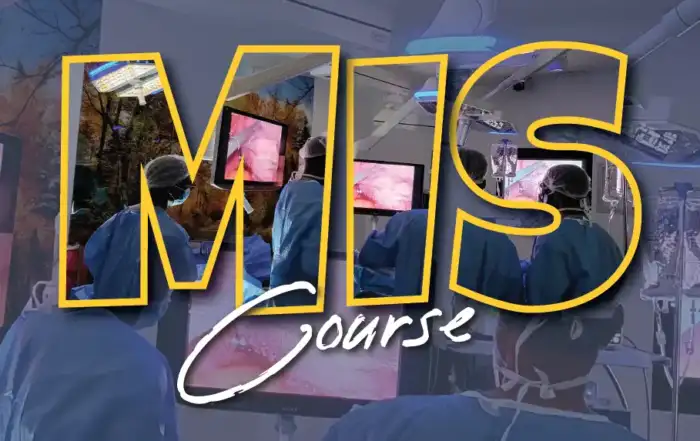Information
- Author: Guenter K Noé
- The laparoscopic lymphadenectomy is respected as a standard procedure in specialized centers. If a para aortic lymphadenectomy is required it can be challenging in endometrium cancer as this patients are often of older age with concomitant diseases and a high rate of obesity.
Co morbidity and the high ventilation pressure can inhibit the essential Trendelenburg position. Fatty tissue and the small bowel can be huge obstacles to ensure a radical level of the treatment. On the other hand a longitudinal laparotomy to reach the aimed radically is problematic for the recovery and the wound healing for old and obese patient.
The video shows a complete and strict retroperitoneal access with the advantage that hardly Trendelenburg position is necessary and the small bowel is outside. The disadvantage is the unfamiliar view and the reduced access to the cava. At the Beginning an umbilical trocar is placed and the insufflation is performed. On the left side a second 10mm incision is made and with a scissor the fascia is prepared and divided bluntly. The trocar is pushed behind the peritoneum under view from inside.
Then the insufflation starts. First landmark is the psoas muscle. The fatty tissue is pushed off until the height of the kidney is reached. Then the ureter is visualized but left in his native tissue, which provides a good vascularization. On the bifurcation we clear the hypogastric nerves to be sure that they are not harmed. Approximately 80% of the lymph-nodes of the para aortic and caval trunk we can find on the left side.
Therefore it is essential to clear the nodes in this region until we reach the renal artery. To ensure this the lateral, retropeitoneal view is an optimal access to provide high radically. The CO2 pressure of 12mm Mercury is sufficient in holding up the peritoneum. The collection of the lymhatic tissue is started at the communal artery. The preparation is performed upward at he left side of the aorta. The lateral line forms the psoas muscle.
This preparation ensures a complete dissection The mesenteric artery can be cleared cranial and caudal which allows access to the cava. Here the preparation is performable down to the communal artery. After the para-aortic part is finished we change the setting to intra- abdominal for collecting the pelvic nodes. If necessary the latter we can close a possible gap. For the procedure we use only bipolar forceps in combination with a scissor.
As the lymphatic vessels are of extreme small size we try to coagulate them in small steps. This results in a low exudation which reduces the drainage time. We insert a 15 mm drainage at the end of the procedure. The video shows the smooth access to the aorta without fighting against bowel or fat. In more than 20 procedures we could perform this strategy even in BMI higher than 50. Several times we had a leakage of the gas into the abdominal cavity. But we could manage to finish the retro-peritoneal access by an additional 5mm Instrument cranial of the Optic-trocar.
After clearing the left side completely the dissection of the cava is performed. First cranial of the mesenteric artery then caudal. It is important to stay in the correct layer. So all vessels, nerves and also the right ureter can be visualized and pushed of without harming them. The complete extra-peritoneal access provides a high radically in obese patients or risks of high co-morbidity. Pressure of 12 mmMerc is sufficient and only a slight Trendelenburg position is needed.
Video
MEMBERS AREA
Categories





